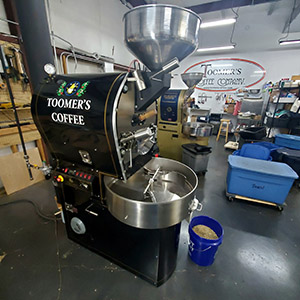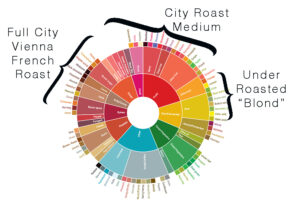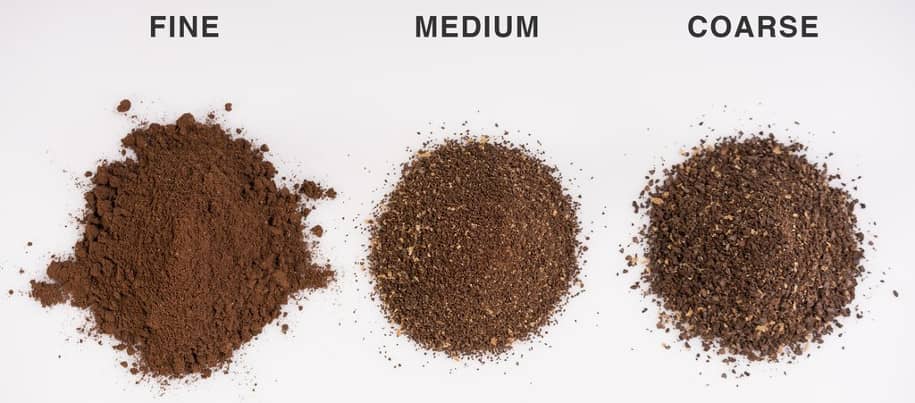The number one reason your coffee may taste sour is that it was under-roasted.
Under-roasting is a very popular trend right now. Some call it a “blonde roast”, while I call it a “light roast”. But here’s the bottom line:When coffee is under-roasted, it doesn’t fully develop all the different flavor components within the bean.
After 20+ years roasting Arabica coffee, I’ve found that just keeping it simple works best. That said, it’s this simple – at Toomer’s Coffee, we focus on these two key roasting temperature markers for consistency:
1. First crack (about 380º to 400º F)
2. Second crack (about 425º F)
Our Basic Roasting Process Using These Temps
The first and second crack temperature stages indicate the development of the coffee beans in the roaster. Think about when you pop popcorn. It starts out with just a few kernels popping and as the temperature in your popcorn popper increases, so does the intensity of the popcorn popping.
With coffee it is somewhat similar but strikingly different in another way. The first crack (like the early phase of popcorn popping) doesn’t just increase and get more intense like the popcorn example. It actually stops at a certain point. Then the roast proceeds relatively quietly without the cracking sound. Then after a short time as the temperature increases, due to what is call the exothermic phase, the second crack begins at about 425º F. From here we watch the time and control how long we allow the second crack to proceed until we get into the medium roasts like Colombian, and Costa Rican then longer for some darker roasts like Sumatra or Tanzanian Peaberry for example. If we leave it alone the second crack sound will dissipate and this phase produces the really dark roasts like Vienna and French roasts. Here literally seconds can be the difference between a Full City roast and French roast.
The Difference: We use infrared roasting technology exclusively

Since we exclusively use an infrared roasting process, which roasts at a lower temperatures, if I pull the lever to release the beans right at the first crack (which I would NEVER do by the way…) —typical for a light or blonde roast—you end up with a very light-colored bean.
The problem? Many of the rich flavor notes—caramel, brown sugar, chocolate, and deeper, more complex flavors—aren’t developed. Instead, you’re left with the easiest-to-extract notes: citrusy and sour flavors.
🌟🌟 It’s worth mentioning that we are in unique clique of roasters who use infrared heating vs. flame bed roasting heating methods. In fact only about 2% of all the coffee roasted today is done using an infrared roaster like we use at Toomer’s Coffee Roasters.
Enter: The Coffee Tasting Wheel

Looking at a standard coffee tasting wheel, you’ll see that:
• Under-roasted, “blonde roast” coffee falls in the yellow spectrum—producing the sour, citrusy, and acidic notes.
•Medium roast coffee, City and Full City roasts begin to develop balance and complexity by blending citrus notes with richer flavors. They will fall into the middle of the wheel.
•Darker roasts, Vienna and French roasts bring out even deeper flavors. They fall into the 9 o’clock position of the wheel/
That said, now you can see: If you’re only tasting sourness, you’re not getting the full potential of the coffee. The bean is not fully developed and well, you get sour coffee.
Here are a few other things to consider beyond just the roasting process

When Sourness Comes from “Under-Extraction”
If you’re using a properly roasted medium to darker roast coffee, but still getting sour notes or flavors, the issue might be under-extraction. What is that? There are several causes. But what this means the water and coffee contact is too fast.
Look at your drip coffee maker and you’ll see that hole in the bottom. That is essentially a calibrated control mechanism to allow the coffee to more slowly interact with the ground coffee. So, you ask, then why would I get sour tasting coffee. Here are a few ideas you can play with.
This can be caused by:
1.Grind Size – If your grind is too coarse using a drip coffee maker or pour over cone, if the water passes too quickly over the coffee, extracting only the easiest (acidic) notes you will get sour coffee (even if it is properly roasted).
HOW TO FIX THAT: Try a finer grind to increase surface area and balances the extraction.
2.Brew Time – If you’re using a French press, for example, not letting the coffee steep long enough before pressing can lead to under-extraction. We recommend no more that 3 minutes and NEVER VARY THIS. See the next section.
HOW TO FIX THAT: Find the brew time especially for French pressed coffee that is best and never vary.

Along Those Lines, Let Me Mention More About French Press Myths and Another Issue: Over-Extraction
Another common mistake is thinking that letting a French press sit longer will add more of a caffeine kick to your coffee. It actually leads to over-extraction and bitterness with littel effect on caffeine content. If you want a stronger (more caffeine) cup, increase the coffee-to-water ratio, not the brew time.

